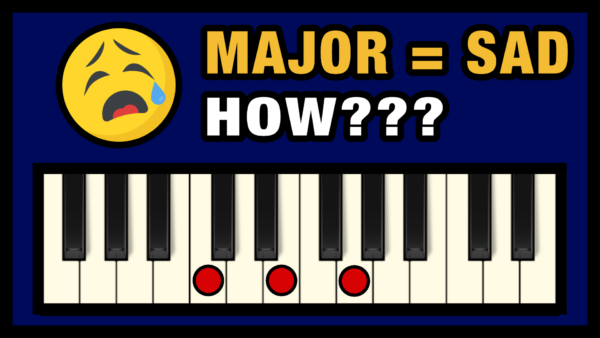 The major scale is one of the most pleasing and uplifting sounding scales of all. And by far the most common, and thus natural to use, at least in traditional western music.
The major scale is one of the most pleasing and uplifting sounding scales of all. And by far the most common, and thus natural to use, at least in traditional western music.
But, does the major scale really have to be happy and uplifting. NO!
In fact, there are many secret tricks you can use as a music creator, to make a major scale in any key, sounding sad, emotional and beautiful. Let’s find out these secrets, right now!
How to make the Major Scale Sad
1. Don’t Focus on the I-IV-V
In the major scale, the diatonic chords on the I, IV and V degree are all major. If you focus mainly on those degrees, you will end up with a very uplifting, light and pleasing tone.
So don’t! Use the tonic major chord, but then focus mainly on the ii – iii – vi minor chords. The more minor chords you use, the more emotional and sad sound you will get in your chord progression.
2. Use Suspended Chords
When you add in one of the major chords, consider making it suspended, meaning a sus4 or sus2. And you don’t even have to always resolve a suspended chord. Every time you use a suspended chord you will get a soft, emotional tension, that will add a beautiful vibe to your progression.
3. Insert add-Chords
Like with suspended chords, if you use add9 or add11 (which you may call add2 and add4, even if it is not the technical name for them), you will add that suspended chord emotion, while still having the main chord color of your minor or major chord.
4. Playing Style is Key
Think about how you play each chord and harmony in your music. Because even if you play a major chord, can play it in a more emotional way. Slow rhythms, flowing arpeggios, longer notes, lower dynamics, adding vibrato, tremolo…every aspect of how you play each instrument in music makes a huge difference for the overall mood.
A great example of the power your “playing style”, is in the track “Sons of Odin” from the Thor Soundtrack by Patrick Doyle. Where the introduction is very emotional due to the playing style even though it is in a major key, and then tracks turns more heroic and uplifting later.
5. Don’t be afraid of the Diminished Chord
I know the diminished chord is extremely rarely used in popular music of all styles. But it sure does have a lot of emotional character to it, because it actually consists of 2 minor third intervals, or even 3 if you play the full diminished 7th chord. However, a little bonus trick you can use if you really want to avoid that dreadful Tritone, is to simply remove it from the chord.
For example: Let’s say you play in C Major. That will make B diminished your dreaded dissonant triad. Well, make it a 2 part harmony instead by removing the fifth. Or turn it into a B min 7 (no 5th).
Now take action, and experiment with these tips and tricks for making your major scale based tracks, into beautiful emotional pieces of music! =)
